2025
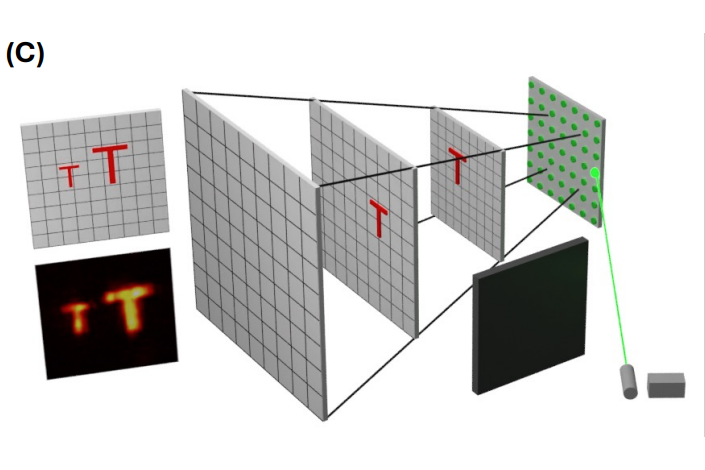
Optimized Sampling for Non-Line-of-Sight Imaging Using Modified Fast Fourier Transforms
Talha Sultan, Alex Bocchieri, Chaoying Gu, Xioachun Liu, Pavel Polynkin, Andreas Velten
Under review.
We demonstrate that the measurement space for non-line-of-sight imaging can be compressed, enabling the development of novel computational methods for 3D diffraction propagation. These methods allow for flexible measurement schemes and significantly enhance reconstruction speed while maintaining reconstruction quality comparable to state-of-the-art methods.
Optimized Sampling for Non-Line-of-Sight Imaging Using Modified Fast Fourier Transforms
Talha Sultan, Alex Bocchieri, Chaoying Gu, Xioachun Liu, Pavel Polynkin, Andreas Velten
Under review.
We demonstrate that the measurement space for non-line-of-sight imaging can be compressed, enabling the development of novel computational methods for 3D diffraction propagation. These methods allow for flexible measurement schemes and significantly enhance reconstruction speed while maintaining reconstruction quality comparable to state-of-the-art methods.
2024
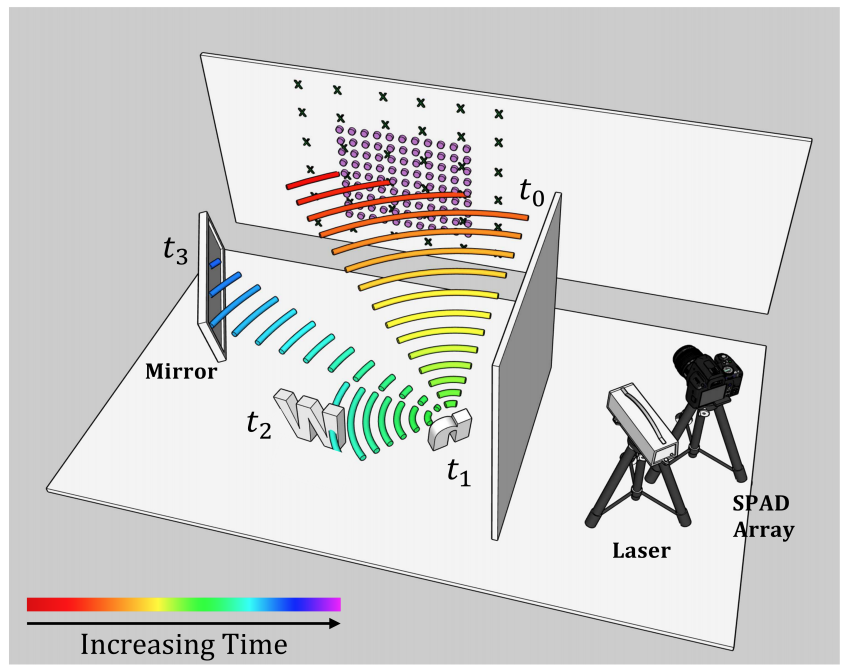
Iterating the Transient Light Transport Matrix for Non-Line-of-Sight Imaging
Talha Sultan, Eric Brandt, Khadijeh Masumnia-Bisheh, Simone Riccardo, Pavel Polynkin, Alberto Tosi, Andreas Velten
Under review.
We employ a multipixel SPAD array to capture additional dimensions of the available measurement space in Non-Line-of-Sight Imaging. This extra information is processed with novel computational methods to extract the transient light transport from surfaces hidden "around the corner"
Iterating the Transient Light Transport Matrix for Non-Line-of-Sight Imaging
Talha Sultan, Eric Brandt, Khadijeh Masumnia-Bisheh, Simone Riccardo, Pavel Polynkin, Alberto Tosi, Andreas Velten
Under review.
We employ a multipixel SPAD array to capture additional dimensions of the available measurement space in Non-Line-of-Sight Imaging. This extra information is processed with novel computational methods to extract the transient light transport from surfaces hidden "around the corner"
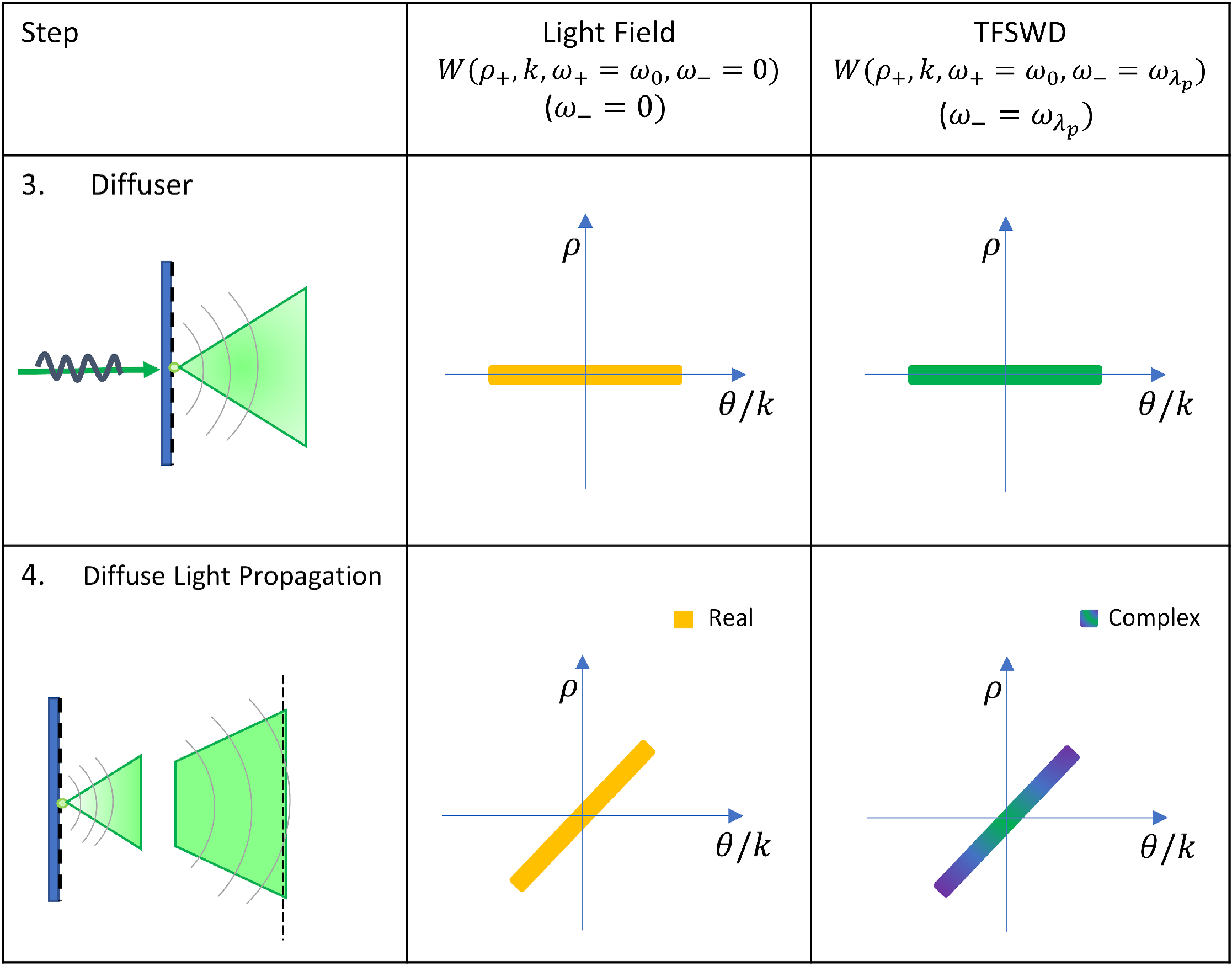
Towards a more accurate light transport model for non-line-of-sight imaging
Talha Sultan, Syed Azer Reza, Andreas Velten
Optics Express 2024
We present a graphical representation of the two-frequency spatial Wigner distribution (TFSWD) forward model, which integrates multiple NLOS imaging modalities. Through experimental validation, we demonstrate that the model more accurately captures light transport and wave propagation, paving the way for future improvements in reconstruction
Towards a more accurate light transport model for non-line-of-sight imaging
Talha Sultan, Syed Azer Reza, Andreas Velten
Optics Express 2024
We present a graphical representation of the two-frequency spatial Wigner distribution (TFSWD) forward model, which integrates multiple NLOS imaging modalities. Through experimental validation, we demonstrate that the model more accurately captures light transport and wave propagation, paving the way for future improvements in reconstruction
2023
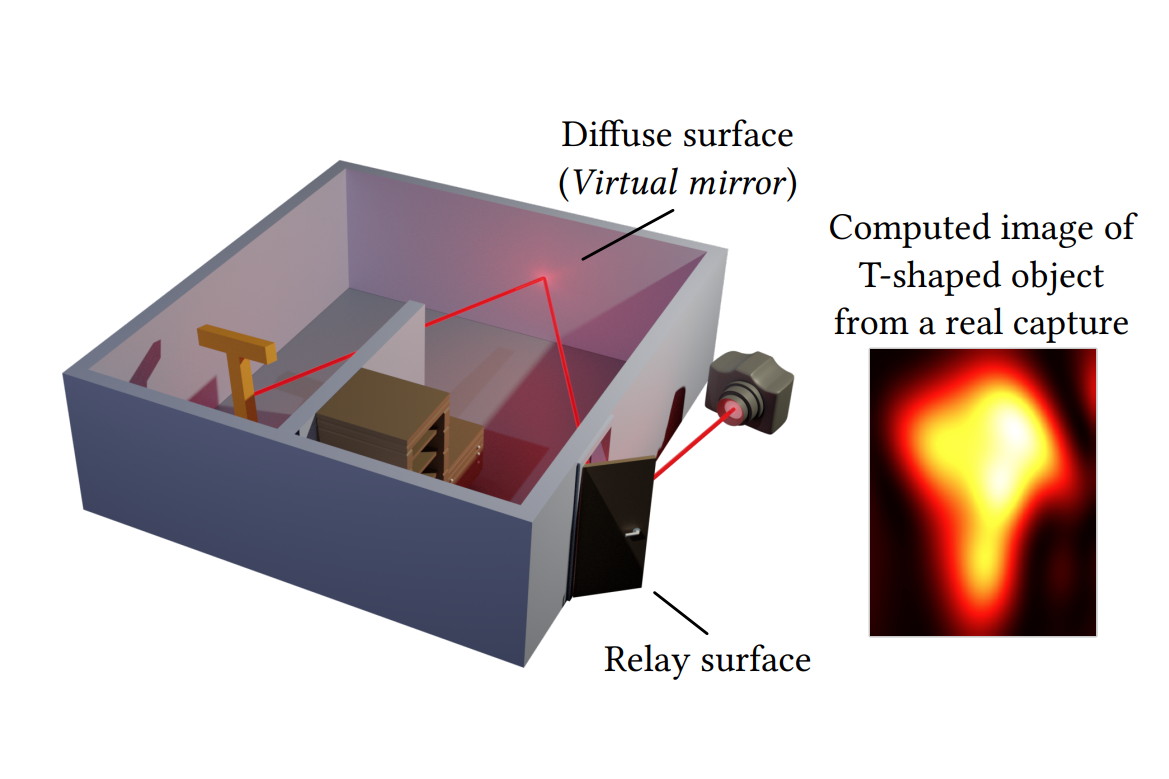
Virtual Mirrors: Non-Line-of-Sight Imaging Beyond the Third Bounce
Diego Royo, Talha Sultan, Adolfo Muñoz, Khadijeh Masumnia-Bisheh, Eric Brandt, Diego Gutierrez, Andreas Velten, Julio Marco
SIGGRAPH 2023
We show that planar diffuse surfaces can act as virtual mirrors in non-line-of-sight (NLOS) imaging when using structured light modulation at centimeter-scale wavelengths. Leveraging this effect, we extend NLOS imaging beyond the third bounce, enabling the reconstruction of mirror reflections of objects hidden around two corners.
Virtual Mirrors: Non-Line-of-Sight Imaging Beyond the Third Bounce
Diego Royo, Talha Sultan, Adolfo Muñoz, Khadijeh Masumnia-Bisheh, Eric Brandt, Diego Gutierrez, Andreas Velten, Julio Marco
SIGGRAPH 2023
We show that planar diffuse surfaces can act as virtual mirrors in non-line-of-sight (NLOS) imaging when using structured light modulation at centimeter-scale wavelengths. Leveraging this effect, we extend NLOS imaging beyond the third bounce, enabling the reconstruction of mirror reflections of objects hidden around two corners.
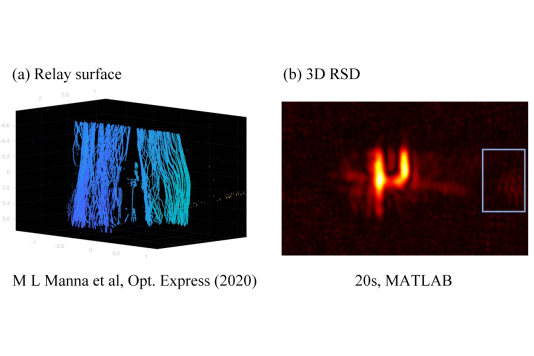
Fast Non-Line-of-sight Imaging with Non-planar Relay Surfaces
Chaoying Gu, Talha Sultan, Khadijeh Masumnia-Bisheh, Laura Waller, Andreas Velten
ICCP 2023
We propose a novel computational method for 3D diffraction propagation on arbitrary non-planar surfaces, achieving significantly better complexity than state-of-the-art algorithms while maintaining quality, validated on experimental data.
Fast Non-Line-of-sight Imaging with Non-planar Relay Surfaces
Chaoying Gu, Talha Sultan, Khadijeh Masumnia-Bisheh, Laura Waller, Andreas Velten
ICCP 2023
We propose a novel computational method for 3D diffraction propagation on arbitrary non-planar surfaces, achieving significantly better complexity than state-of-the-art algorithms while maintaining quality, validated on experimental data.